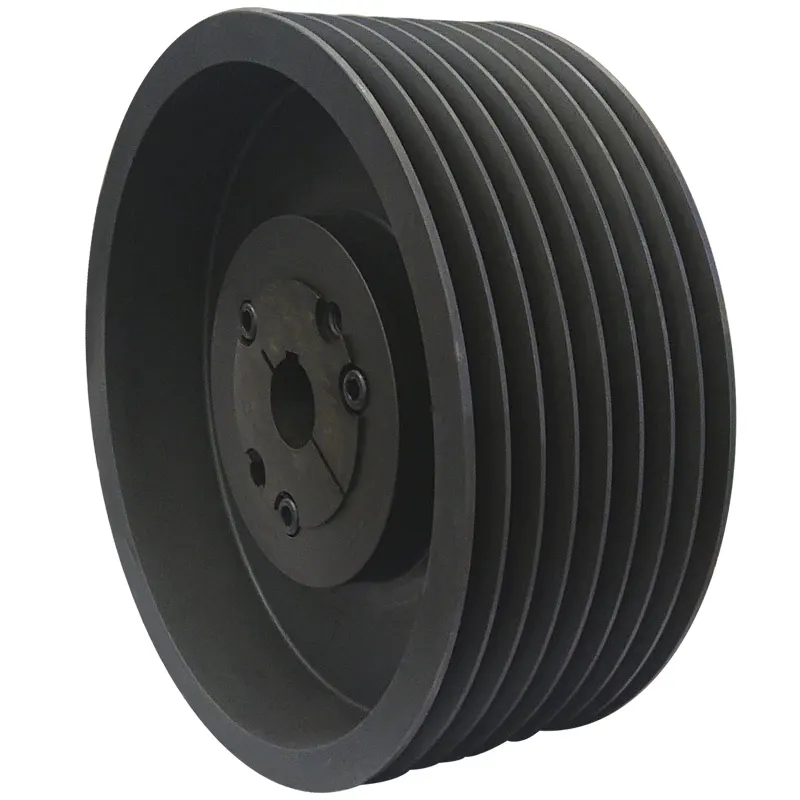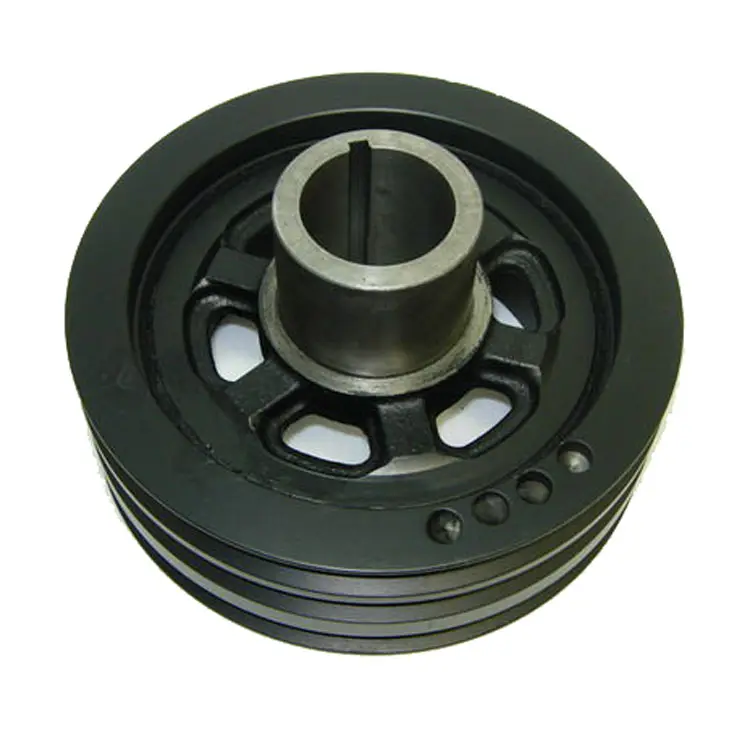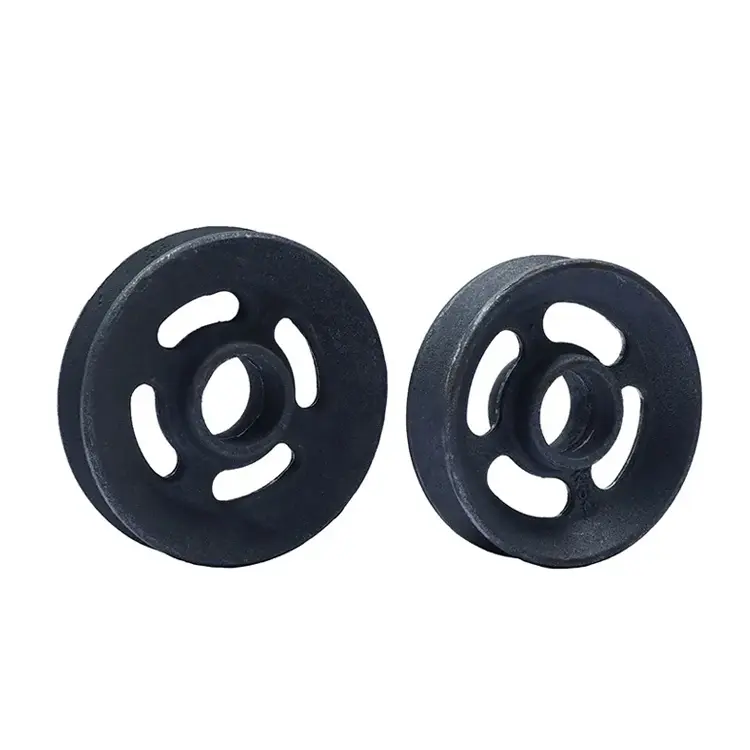Product Description
Logging pulley is a necessary logging auxiliary equipment for each logging team. It is an important carrier for logging cable, guiding operation and downhole load. Its reliable and safe operation directly affects the normal work of logging operation.
Logging pulley is a kind of special equipment used in logging, perforating, and core core operations. It is mainly used to change the running direction of the cable. When the cable goes down the well, it will go down with the logging pulley and drive the logging pulley to move.
/* January 22, 2571 19:08:37 */!function(){function s(e,r){var a,o={};try{e&&e.split(“,”).forEach(function(e,t){e&&(a=e.match(/(.*?):(.*)$/))&&1
| After-sales Service: | Provide |
|---|---|
| Warranty: | 1 Year |
| Manufacturing Process: | Casting |
| Surface Treatment: | Without Processing |
| Operation Pressure: | Atmospheric Pressure |
| Material: | Stainless Steel |
| Customization: |
Available
| Customized Request |
|---|

What environmental factors should be considered when using sheaves outdoors?
When using sheaves outdoors, several environmental factors should be considered to ensure their optimal performance and longevity. Outdoor environments can subject sheaves to various elements and conditions that may impact their functionality. Here are the environmental factors to consider:
- Temperature variations: Sheaves are exposed to temperature fluctuations outdoors, which can affect their materials and performance. Extreme heat or cold can cause expansion or contraction of the sheave components, potentially leading to misalignment or reduced efficiency. It is important to select sheaves made from materials that can withstand the expected temperature range and consider thermal expansion factors during installation.
- Moisture and humidity: Outdoor environments often have higher levels of moisture and humidity, which can lead to corrosion, rusting, or deterioration of sheave materials. It is crucial to choose sheaves constructed from corrosion-resistant materials, such as stainless steel or coated alloys, and regularly inspect and maintain them to prevent moisture-related damage.
- UV exposure: Sheaves exposed to direct sunlight are susceptible to ultraviolet (UV) radiation. Prolonged UV exposure can degrade certain materials, causing them to become brittle or discolored over time. Utilizing sheaves with UV-resistant coatings or selecting materials with high UV resistance can help mitigate the effects of sunlight exposure.
- Contaminants and debris: Outdoor environments may contain airborne contaminants, dust, dirt, or debris that can accumulate on sheave surfaces. These contaminants can hinder sheave rotation, affect alignment, increase friction, and accelerate wear. Regular cleaning and maintenance are necessary to remove any accumulated debris and ensure smooth operation.
- Wind and vibration: Sheaves used outdoors may be subject to wind loads and vibrations. Strong winds can induce additional forces and stresses on the sheave system, potentially affecting its stability and performance. Proper anchoring, reinforcement, and selection of sturdy sheave materials can help mitigate the impact of wind and vibrations.
- Exposure to chemicals: Depending on the outdoor setting, sheaves may come into contact with chemicals, pollutants, or corrosive substances. These can corrode or degrade sheave materials, leading to reduced performance or failure. It is essential to assess the environmental conditions and select sheaves that are resistant to the specific chemicals or substances present.
- Environmental protection: Outdoor sheaves should be adequately protected from the elements to ensure their longevity. This may involve using protective enclosures, covers, or shields to shield them from direct exposure to rain, snow, or excessive sunlight. Additionally, regular inspections and maintenance should be performed to identify and address any signs of environmental damage.
Considering these environmental factors when using sheaves outdoors is crucial for ensuring their reliable and extended operation. By selecting appropriate materials, implementing protective measures, and conducting regular maintenance, the performance and lifespan of outdoor sheaves can be optimized.

How do advancements in material technology impact the design of modern sheaves?
Advancements in material technology have a significant impact on the design of modern sheaves. Material innovations offer new possibilities and improvements in terms of performance, durability, weight reduction, and overall efficiency. Here are some ways in which advancements in material technology influence the design of modern sheaves:
- Strength and load capacity: New materials with higher strength-to-weight ratios allow for the design of sheaves that can handle heavier loads while maintaining structural integrity. These materials, such as high-strength alloys or fiber-reinforced composites, enable the creation of lightweight sheaves with increased load-bearing capabilities.
- Reduced friction and wear: Advanced materials with low friction coefficients and excellent wear resistance can significantly improve the efficiency and longevity of sheave systems. For example, the use of self-lubricating materials or specialized coatings can minimize friction between the sheave and the belt or rope, reducing energy losses and extending the service life of the components.
- Corrosion resistance: Certain industries or applications expose sheaves to corrosive environments. Modern materials that offer enhanced corrosion resistance, such as stainless steel or corrosion-resistant alloys, can be utilized to ensure the longevity and reliability of sheave systems in such conditions.
- Temperature resistance: Some applications require sheaves to operate in high-temperature environments. Advances in material technology have led to the development of heat-resistant materials that can withstand elevated temperatures without compromising performance. These materials enable the design of sheaves suitable for applications such as industrial ovens, kilns, or engine compartments.
- Noise and vibration reduction: Certain materials have properties that help dampen noise and vibrations generated during sheave operation. By incorporating these materials, modern sheave designs can minimize noise pollution and improve the overall comfort and safety of the surrounding environment.
Overall, advancements in material technology provide designers with a broader range of options when it comes to selecting materials for sheave construction. These advancements enable the creation of sheaves that are lighter, stronger, more efficient, and better suited to withstand challenging operating conditions. Manufacturers can leverage these material innovations to optimize the performance, reliability, and longevity of modern sheave systems.

What is a sheave, and how is it used in mechanical systems?
A sheave is a mechanical component used in various mechanical systems for transmitting power and changing the direction or speed of a belt or rope. Here is a detailed explanation of what a sheave is and how it is used:
Definition:
A sheave, also known as a pulley wheel or a belt wheel, is a grooved wheel that is typically mounted on an axle or shaft. It features a groove or grooves along its circumference to guide a belt, rope, or cable. The groove prevents slippage and provides traction for power transmission.
Function:
Sheaves serve several important functions in mechanical systems:
1. Power Transmission:
Sheaves are primarily used to transmit power from one rotating component to another. When a belt or rope is looped around a sheave, the rotation of the sheave causes the belt or rope to move, transferring power from the input side to the output side.
2. Speed and Directional Changes:
By using different-sized sheaves in combination with belts or ropes of varying lengths, mechanical systems can achieve speed and directional changes. Larger sheaves connected to smaller sheaves will result in speed reduction, while smaller sheaves connected to larger sheaves will increase speed. Changing the arrangement of sheaves can also alter the direction of motion.
3. Tensioning and Belt Tracking:
Sheaves play a role in tensioning belts or ropes within a system. Proper tension is crucial for efficient power transmission and preventing belt slippage. Tensioning mechanisms, such as adjustable sheave positions or spring-loaded idler pulleys, are used to maintain the desired tension. Sheaves can also assist in tracking the belt or rope along the correct path within the system.
4. Load Distribution:
In systems with multiple sheaves, load distribution is an important consideration. By distributing the load across multiple sheaves, the system can handle higher loads while reducing the strain on individual components.
Types of Sheaves:
Sheaves come in various types depending on the application:
a. Flat Belt Sheaves: Designed for flat belts, these sheaves have a flat groove along their circumference.
b. V-Belt Sheaves: These sheaves are designed to accommodate V-belts, which have a trapezoidal cross-section. The groove in V-belt sheaves matches the shape of the V-belt, providing a secure fit.
c. Timing Belt Sheaves: Used in systems that require precise synchronization, timing belt sheaves have teeth that mesh with the teeth on the timing belt, ensuring accurate timing and positional control.
d. Wire Rope Sheaves: Wire rope sheaves are specifically designed for use with wire ropes or cables and feature a groove that prevents the wire rope from slipping.
Applications:
Sheaves are employed in a wide range of mechanical systems, including:
– Conveyor systems
– Elevators and lifts
– Cranes and hoists
– Agricultural machinery
– Industrial machinery
– HVAC systems
– Power transmission systems
Summary:
In summary, a sheave is a grooved wheel used in mechanical systems for power transmission, speed and directional changes, tensioning, load distribution, and belt tracking. They come in various types, such as flat belt sheaves, V-belt sheaves, timing belt sheaves, and wire rope sheaves, and find applications in a wide range of industries and machinery.


editor by CX
2024-04-03